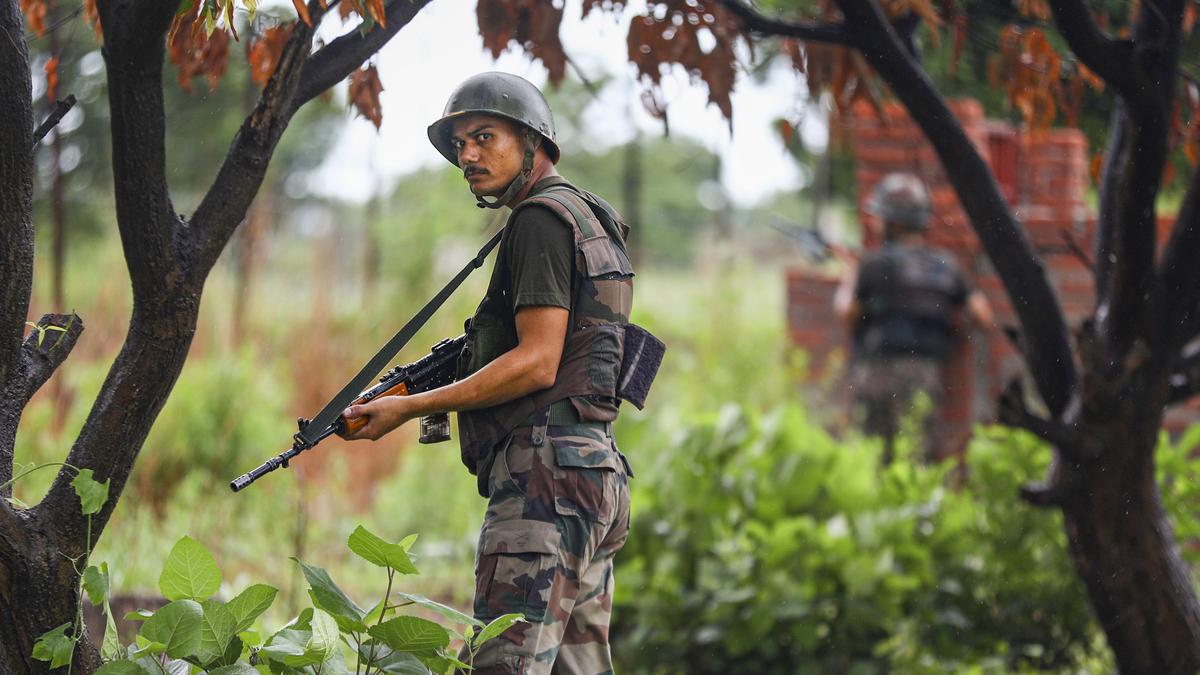 |
|
The recent skirmishes along the Line of Control (LoC) in Jammu and Kashmir (J&K) have raised concerns, but the Indian Army has affirmed that the ceasefire agreement between India and Pakistan remains in effect. Despite several incidents, including an IED blast that killed two soldiers and other instances of cross-border firing, the Army maintains that the ceasefire is being upheld according to the understanding reached between both nations' militaries. This assertion is crucial for maintaining stability in a region historically marked by conflict and tension. The statement aims to de-escalate any potential escalation, emphasizing that the incidents, while regrettable, are being handled through established communication channels and diplomatic processes.
The Indian Army's response highlights the importance of established mechanisms for conflict resolution. By stating that the tension resulting from these 'stray incidents' is being managed through these channels, the Army underscores its commitment to de-escalation and peaceful resolution. This approach is critical for avoiding a wider conflict, as even minor incidents along the LoC can easily escalate if not properly addressed. The emphasis on the established mechanisms suggests a structured process of communication and negotiation between the two armies, designed to prevent miscalculations and accidental escalations. This diplomatic approach, while not always foolproof, remains a vital tool for managing tension in the volatile region.
The Indian Army's declaration that no heavy-calibre weapons have been exchanged further supports the narrative of contained incidents. The characterization of the events as 'minor' and 'not unprecedented' suggests an attempt to downplay the seriousness of the situation, while simultaneously acknowledging the challenges inherent in maintaining peace along a heavily militarized border. The fact that concerns have been raised with the Pakistan Army at the appropriate level indicates a willingness to engage in diplomatic discussions and find a resolution. The simultaneous maintenance of a high state of alert demonstrates the Army's commitment to security and its readiness to respond to any further threats.
The recent uptick in militant activity close to the LoC, culminating in the tragic deaths of Indian soldiers, adds a layer of complexity to the situation. The IED blast in Akhnoor sector and the firing incident in Nowshera sector underscore the ongoing security challenges faced by India in the region. The killing of infiltrators in Poonch and the landmine explosion in Rajouri illustrate the constant threat posed by militant groups operating near the border. These incidents highlight the precarious security situation and the constant vigilance required to maintain peace and stability in the area. The high-level security meetings chaired by the J&K Lieutenant Governor demonstrate the seriousness with which the government is taking these events and its commitment to finding solutions.
The high-level security meetings convened by the J&K Lieutenant Governor, attended by senior officials from the police, army, CRPF, and other security forces, underscore the collaborative effort to address the security challenges. These meetings serve as platforms for coordinating strategies, sharing intelligence, and making crucial decisions about resource allocation and operational deployments. The fact that two such meetings were held within two days indicates a heightened sense of urgency and a determination to comprehensively address the situation. The involvement of multiple security agencies emphasizes the multifaceted nature of the threat and the need for a coordinated response.
In conclusion, while recent incidents along the LoC have heightened tensions, the Indian Army's assertion that the ceasefire remains intact provides a measure of reassurance. The emphasis on established communication channels, the lack of heavy weapons exchanges, and the high level of security meetings all point to a concerted effort to maintain peace and stability, despite ongoing challenges. However, the recent increase in militant activity and the loss of Indian soldiers serve as a stark reminder of the persistent security threats and the fragility of peace in the region. Continuous vigilance, robust communication channels, and a commitment to peaceful resolution will be crucial in navigating the complexities of the situation and ensuring long-term stability along the LoC.
Source: Ceasefire on LoC intact in J&K as per understanding between India, Pakistan: Indian Army
